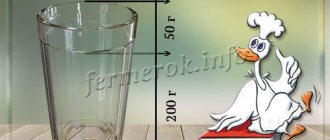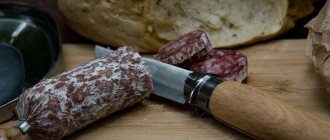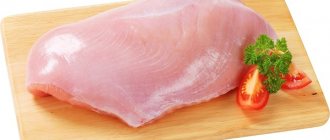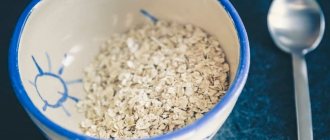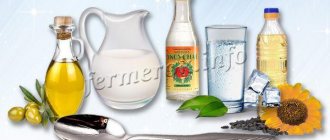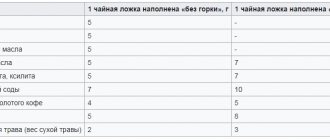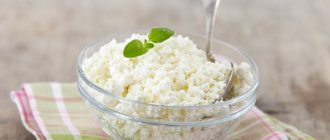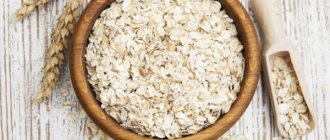- October 21, 2018
- Dessert
- Anna Kirnitskaya
Before you start studying a topic related to the question: 100 grams of honey is how many tablespoons, familiarize yourself with the concept of specific gravity of honey. This notation in physics defines the ratio of weight to the space it occupies. Accordingly, when talking about bee nectar, first of all we are trying to determine how much product is placed in a particular container.
In this case, it will not be superfluous to know the information that when preparing dishes with honey or creating medicinal/cosmetic products with this component, before adding the ingredient, it is worth determining the daily norm for an adult and a child. This will help to avoid allergic reactions due to foods oversaturated with honey, as well as correctly calculate the daily requirement of kilocalories per person. It remains to be seen: 100 grams of honey equals how many tablespoons.
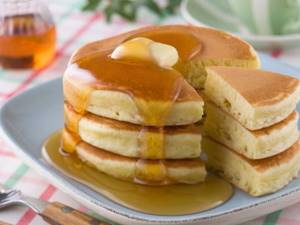
For example, for an adult it is permissible to consume no more than 100 grams of honey per 24 hours. To have an idea of how much it is, let’s compare the value: 100 grams of honey is a glass filled 1/3 with bee nectar.
Instructions
Difficulty level: Easy
1 step
1 tablespoon equals: 15g poppy seeds, 20g cocoa, 25g rice, 20g wheat flour, 30g starch, 25g buckwheat, 15g oatmeal, 25g semolina, 30g salt, 20g sugar, 20g milk, 25g sour cream, 25g millet, 20g melted butter, 20g honey, 50g butter, 20g vegetable oil, 15g vinegar, 20g tomato juice, 9g ground pepper.
Step 2
1 teaspoon equals: 5g poppy seeds, 8g wheat flour, 10g starch, 5g oatmeal, 8g semolina, 10g salt, 10g sour cream, 5g ghee, 30g butter, 5g vegetable oil, 5g vinegar, 8g tomato puree, 3g citric acid , 5g ground black pepper.
Step 3
1 glass, the volume of which is 250 ml, is equal to: 155 g poppy seeds, 160 g wheat flour, 200 g starch, 100 g oatmeal, 200 g semolina, 230 g rice, 220 g millet, 100 g pasta, 220 g beans, 230 g peas, 200 g sugar, 325 g salt, 250 g milk, 250g sour cream, 245g ghee, 325g honey, 210g butter, 240 vegetable oil, 330g jam, 250g vinegar, 220g tomato puree, 170g hazelnuts, 160g almonds, 175g peeled peanuts, 200g blueberries, 175g red currants, 1 55g blackcurrant, 180g raspberries, 190g powdered sugar, 250g cream, 50g corn flakes, 165g raisins, 70g dried apples, 230g jam, 340g berry puree, 165g cherries, 140g lingonberries, 200g blueberries, 190g blackberries, 150g strawberries, 145g blueberries kva, 210g gooseberries, 195g mulberries.
source: https://akak.ru
- cooking
Probably, not every housewife always has a special kitchen scale at hand, and it is necessary to find out the exact weight of certain products quite often. Therefore, the question arises: How to measure without scales or how to weigh without scales? Of course, a kitchen scale is not an essential item, but cups, glasses, and spoons can be found in every kitchen.
In order to find out a fairly accurate measure of the weight of bulk products, fruits, vegetables, nuts or spices, take a standard volume tea glass (250 ml) or an old Soviet faceted glass (200 ml) , a tablespoon (18 ml) or a teaspoon (5 ml) and pour in the required amount of ingredients, the weight in grams of which can be found by following the directions in the culinary table.
Tablespoon

- A tablespoon holds from 9 to 50 grams of various products:
- Jam, butter – 50 grams;
- Starch, honey, flour, salt, ground nuts - 30 grams;
- Sour cream, cocoa powder, rolled oats, sugar, semolina, buckwheat, barley, millet, rice, millet, granulated sugar, soda – 25 grams;
- Powdered milk, sugar, milk, ghee, vegetable oil, tomato juice, water – 20 grams;
- Any liquid – 18 grams;
- Ground crackers, poppy seeds, oatmeal, vinegar, margarine – 15 grams;
- Ground pepper – 9 grams.
The popular bookmaker has launched a mobile application for Android, you can follow the link absolutely free and without registration.
So, how to weigh without scales? Very simple…
| Product | Glass (250ml) | Glass (200ml) | Tbsp (18ml) | teaspoon (5ml) |
| Water | 250 | 200 | 18 | 5 |
| Granulated sugar | 200 | 180 | 25 | 8 |
| Powdered sugar | 190 | 160 | 25 | 10 |
| Salt | 325 | 260 | 15 | 10 |
| Drinking soda | — | — | 28 | 12 |
| Citric acid | — | — | 25 | 7 |
| Vegetable oil | 245 | 190 | 20 | 5 |
| Liquid honey | 415 | 330 | 30 | 9 |
| Gelatin powder | — | — | 15 | 5 |
| Cocoa powder | — | — | 25 | 9 |
| Ground coffee | — | — | 20 | 7 |
| Poppy | — | 135 | 18 | 5 |
| Liquor | — | — | 20 | 7 |
| Melted margarine | 230 | 180 | 15 | 4 |
| Condensed milk | — | — | 30 | 12 |
| Animal oil | 240 | 185 | 17 | 5 |
| Whole milk | 255 | 204 | 18 | 5 |
| Wheat flour | 160 | 130 | 30 | 10 |
| Egg powder | 100 | 80 | 25 | 10 |
| Starch | 180 | 150 | 30 | 10 |
| Sour cream | 250 | 210 | 25 | 10 |
| Cream | 250 | 200 | 14 | 5 |
| Vinegar | — | — | 15 | 5 |
| Tomato sauce | 220 | 180 | 25 | 8 |
| Tomato paste | — | — | 30 | 10 |
| Vegetable and fruit juices | 250 | 200 | 18 | 5 |
How to calculate using a table how many grams of honey
To calculate how much of the sweet treat was in the tea or on the pancake, you need to correlate the number of spoons with the weight indicated in the table. Choose the weight category that corresponds to the consistency of the product, since fluid, dense and candied apiproducts weigh differently.
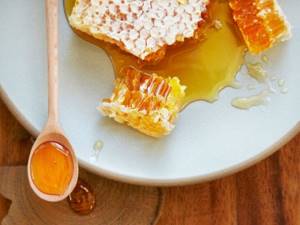
Honey stimulates digestion and thereby improves metabolism. It normalizes acidity in the stomach and gastrointestinal microflora.
Added 5 good spoons of thin honey to the cake dough? The product content in the future confectionery product will be 200 g. Did you sweeten your coffee with half a spoon of the aromatic api product? The drink “heavier” by about 3-4 g.
The sweet bee product consists of 80% simple carbohydrates - glucose and sucrose. About 18% (but not more than 21%) is water. The protein content is more than symbolic (0.8 g/100 g), and there is no fat at all.
The calorie content of the aromatic delicacy is 329 kcal/100 g. A teaspoon with 8 g of sweetness contains about 26 kcal. Not much, but we have fast carbohydrates in front of us.

It is not safe to give honey to children under 12 months of age. Bacterial spores from honey can cause infant botulism, a rare but potentially life-threatening disease. Its main symptoms are constipation, general weakness and weak cry. The spores that cause botulism in infants are harmless to older children and adults.
Yes, they are more beneficial due to their rich mineral and vitamin composition, but still, honey is absorbed quickly, causing spikes in blood sugar, so daily consumption should be limited. It's better to eat a little in the morning.
The main purpose of measuring honey is to comply with the recipe and control calorie intake. A small spoon is convenient for measuring small portions of the product, and a large cutlery is more often used in the process of preparing dishes containing beekeeping products. If you know how much treat can fit in a measuring container, you can do without kitchen scales.

Dessert
| Product | Glass (250ml) | Glass (200ml) | Tbsp (18ml) | teaspoon (5ml) |
| Jam | 340 | 280 | 45 | 20 |
| Jam | — | — | 40 | 15 |
| Berry puree | 350 | 300 | 20 | 7 |
| Jam | 230 | 185 | 25 | 12 |
| Dried apples | 70 | 55 | — | — |
| Raisin | 165 | 130 | 25 | — |
Volume of liquids
In this case, weighing is not even required, since all pouring ingredients are indicated in recipes in milliliters, not grams. To determine their required volume, you will need a measuring cup. If you can’t find it in the kitchen, then an ordinary faceted one, a tablespoon or a teaspoon for small scales, will do.
It is important to remember that the same volume of different liquids will always weigh differently. For example, a glass of water will always contain as many milliliters as corresponds to its volume, but there will always be less vegetable oil, since its density is less.
Berries
| Product | Glass (250ml) | Glass (200ml) | Tbsp (18ml) | teaspoon (5ml) |
| Cherry | 165 | 130 | 30 | — |
| Cowberry | 140 | 110 | — | — |
| Blueberry | 200 | 160 | — | — |
| Blackberry | 190 | 150 | 40 | — |
| Strawberry | 150 | 120 | 25 | — |
| Cranberry | 145 | 115 | — | — |
| Gooseberry | 210 | 165 | 40 | — |
| Raspberries | 180 | 145 | 20 | — |
| Black currant | 155 | 125 | 30 | — |
| Red currants | 175 | 140 | 35 | — |
| Blueberry | 200 | 160 | — | — |
| Mulberry | 195 | 155 | 40 | — |
| Dry rosehip | — | — | 20 | 6 |
We measure products correctly

How to use home weights correctly? For liquid products, containers should be filled to the limit, that is, to the very brim. It is more convenient to apply viscous and thick mixtures (honey, jam, sour cream) with a spoon, making sure that the glass is completely filled. Fill containers with loose and viscous products with a heap, and do not scoop flour and starch directly from a bag or bag, but pour it with a spoon so that voids do not form. There is no need to shake, loosen or compact the food, and if you need to sift the flour, do it after measuring. The fact is that when sifting, the flour becomes more voluminous, which means its weight will change. For comparison, a thin glass contains 160g of flour when filled correctly, 210g of tamped flour and 125g of sifted flour. Changing the characteristics of products also affects their weight - for example, an increase in humidity makes salt, sugar and flour heavier, and fermented sour cream is lighter than fresh.
Vegetables and fruits
- Product (medium size) >>> 1 piece (g)
- Potato >>> 100
- Bulb onions >>> 75
- Carrot >>> 75
- Parsley root >>> 50
- Cabbage >>> 1200-1500
- Cucumber >>> 100
- Tomatoes >>> 75-115
- Apricot >>> 26
- Banana >>> 72
- Orange >>> 100-150
- Lemon >>> 60
- Pear >>> 125
- Apples >>> 90-200
- Figs >>> 40
- Plum >>> 30
Other measuring instruments
To determine the weight, you can also use ordinary jars, which are often used in capping. You can find out the mass by its ratio with water. It is known that honey is one and a half times heavier, respectively:
- a liter jar contains from 1100 to 1500 grams of honey (depending on the percentage of moisture it contains and the variety);
- two-liter jar - 3 kilograms;
- three-liter jar - up to 6 kilograms.
By analogy with glass jars, you can use bottles or flasks. Thus, a plastic bottle with a volume of 0.75 ml will hold from 1150 to 1130 grams of natural delicacy, a one and a half liter bottle - from 1200 to 1600. A ten-liter flask will hold over 70 kilograms.
Nuts
| Product | Glass (250ml) | Glass (200ml) | Tbsp (18ml) | teaspoon (5ml) |
| Peanuts | 175 | 140 | 25 | 8 |
| Almond | 160 | 130 | 30 | 10 |
| Hazelnut | 170 | 130 | 30 | 10 |
| crushed nuts | 120 | 90 | 20 | 7 |
The secret to high volume
If the weight of liquids and bulk ingredients can be easily determined using spoons or a glass, then how to weigh large products without scales remains a question. In this case, measuring containers should be used in pots or bowls, the volume of which is known and measured in liters.
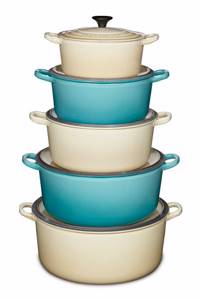
Having tightly packed the necessary ingredients into them, you can approximately determine their weight by comparing them with the volume of the container.
If a more accurate measurement is needed, then you should prepare 2 pans of such a size that one fits freely into the other. Fill a large container with water and place it in the sink. Pour exactly a kilogram of sugar, salt or another product that is in the kitchen in the exact weight into a smaller pan. Now you need to lower the small container into the larger one so that the water from the lower pan reaches the edges of the upper one. So how to weigh food without scales using scrap materials and what does sugar have to do with it? Now you should pour it out, place what you actually need to weigh into a small container, and also lower it into a pan with the same water. As soon as the liquid reaches the edges, there is exactly a kilogram of the required product in the upper container.
Herbs, spices (g)
| Product | Tbsp (18ml) | teaspoon (5ml) |
| Carnation | — | 3 |
| Ground cloves | — | 4 |
| Ginger | — | 2 |
| Ground cinnamon | 25 | 8 |
| Pepper ground | 3 | 1 |
| Pepper shower. ground | — | 4,5 |
| Dry mustard | — | 2-4 |
Accuracy - the politeness of kings
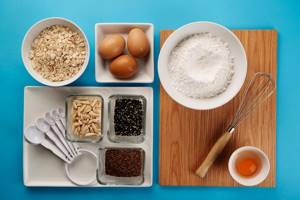
To measure the weight of products without scales, you need to follow some rules that will help you strictly follow the recipe. For preparing appetizers, soups, main courses and side dishes, this is not so critical. However, in some cases, such as when baking bread, an incorrect ratio of liquid to flour can cause fermentation to slow down. If there is a lack of moisture, the dough does not rise well and the bread has a dry, crumbly texture. If, on the contrary, there is too much moisture, the baked goods will turn out heavy, mushy, with a soggy and sticky crumb.

